Skills, behavior, talent, issues, goals—you can gather as much information as you want in a face-to-face interview. It helps you learn an applicant's career plan, discover a student's strengths…
continue reading
50+ Sample Preschool Schedules
-

Preschool Virtual Learning Schedule
download now -

Childhood Preschool Schedule Example
download now -
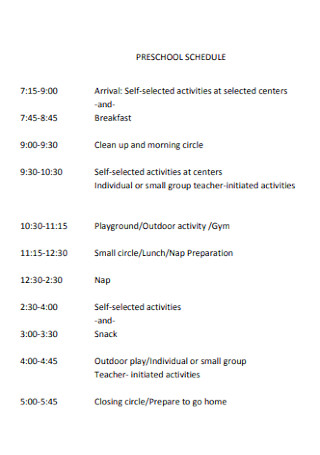
Sample Preschool Schedule Template
download now -

Five Days Preschool Schedule
download now -
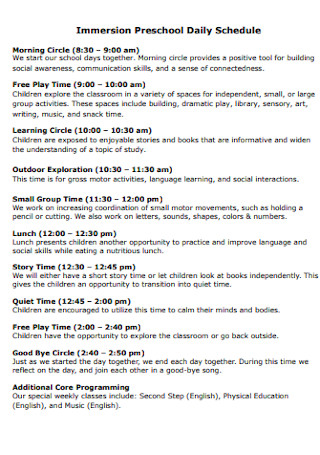
Immersion Preschool Daily Schedule
download now -

Preschool Daily Schedule Template
download now -
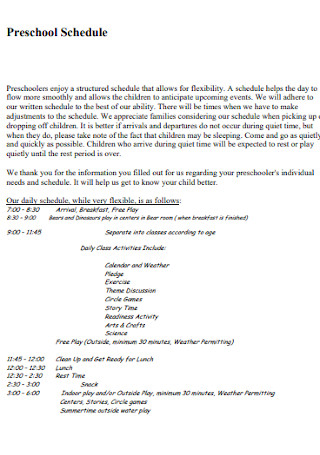
Preschool Schedule Format
download now -
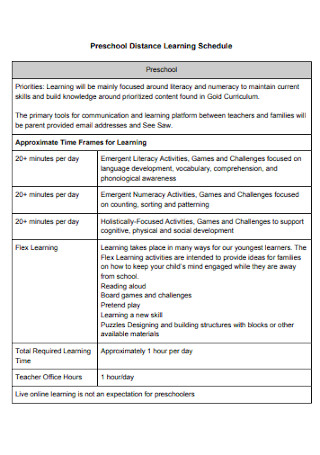
Preschool Distance Learning Schedule
download now -
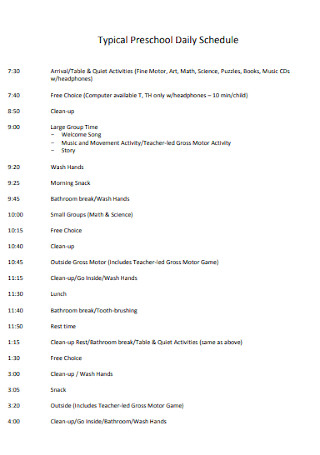
Typical Preschool Daily Schedule
download now -

Flexible Pre-School Daily Schedule
download now -
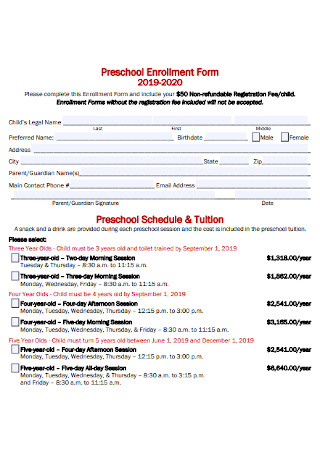
Basic Preschool Schedule Form
download now -
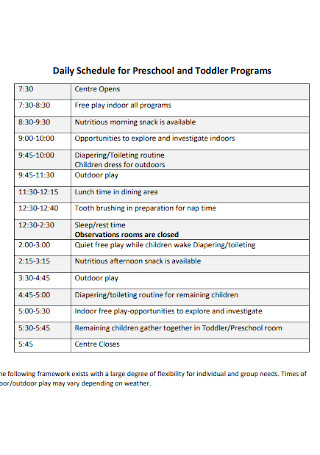
Preschool and Toddler Programs Schedule
download now -
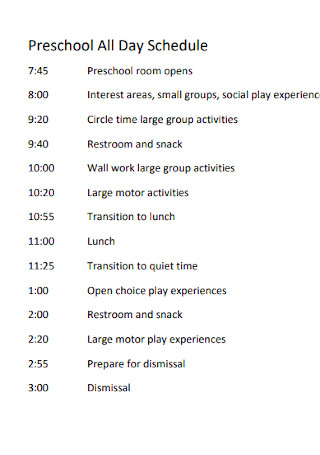
Preschool All Day Schedule
download now -
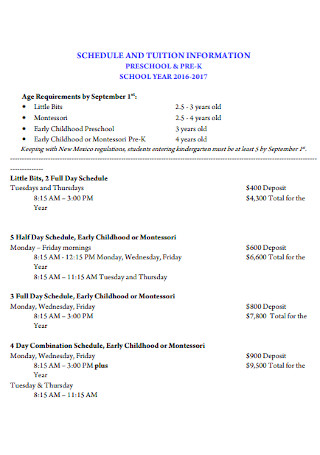
Preschool Tuition Schedule
download now -

Basic Preschool Schedule Template
download now -
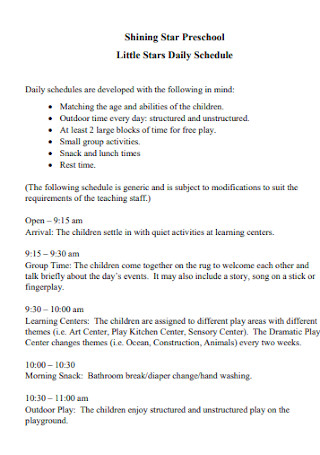
Preschool Stars Daily Schedule
download now -
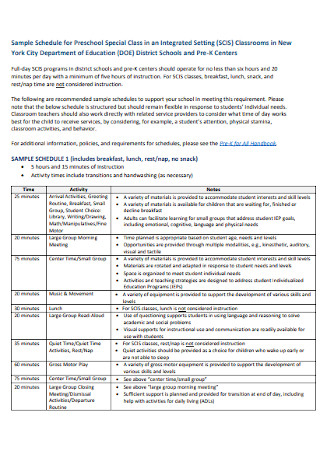
Preschool Special Class Schedule
download now -
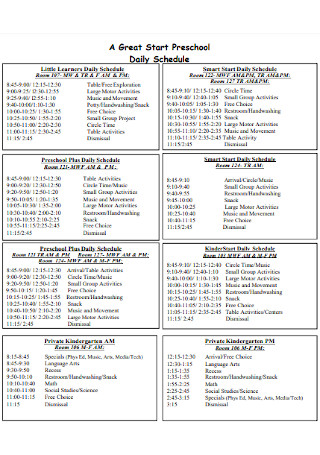
Preschool Learning Schedule
download now -
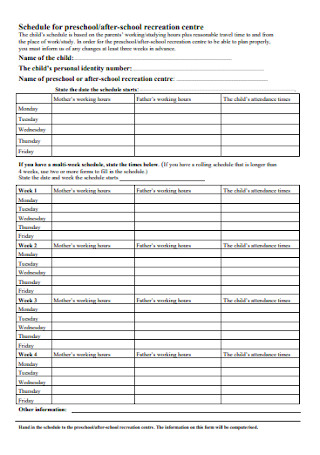
Schedule for recreation preschool
download now -
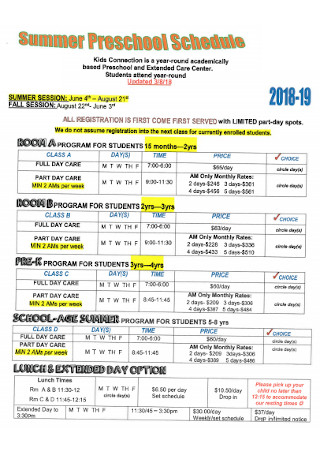
Summer Preschool Schedule
download now -
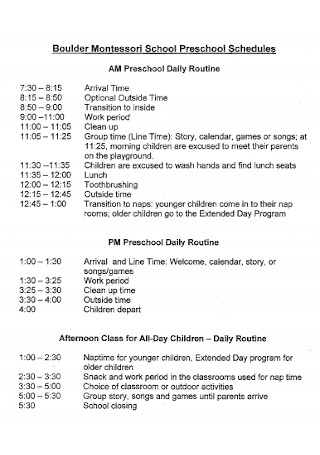
School and Preschool Schedule
download now -
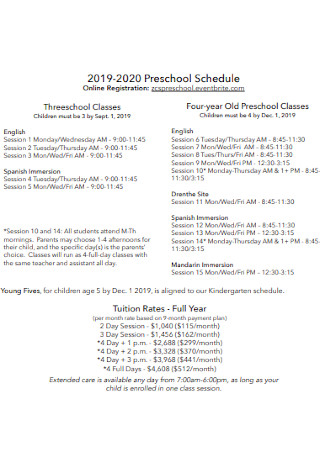
Kids Preschool Schedule
download now -
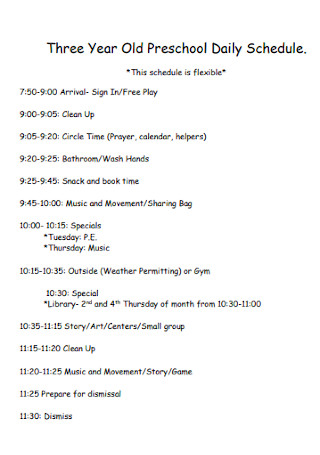
Three Year Old Preschool Daily Schedule
download now -
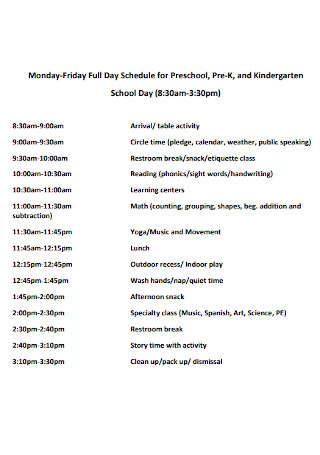
Full Day Schedule for Preschool
download now -
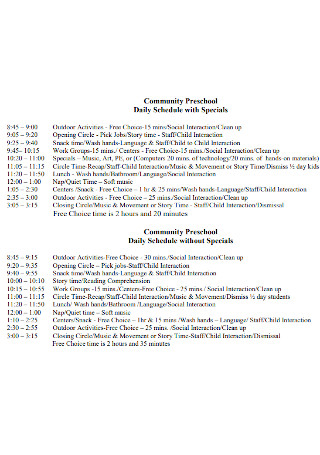
Community Preschool Schedule
download now -
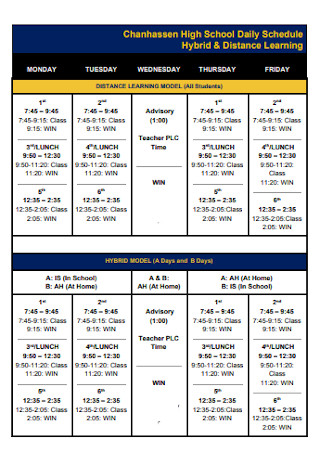
High School Daily Schedule
download now -
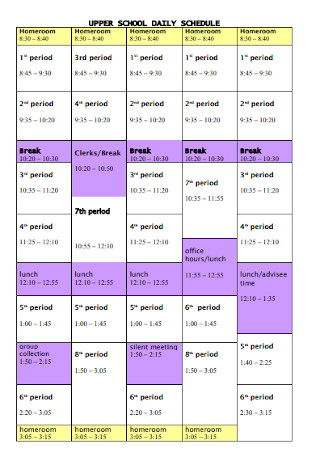
Upper preschool Daily Schedule
download now -

Preschool Daily Class Schedule
download now -
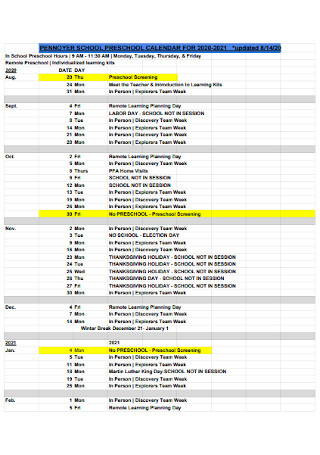
Preschool Calendar and Schedule
download now -
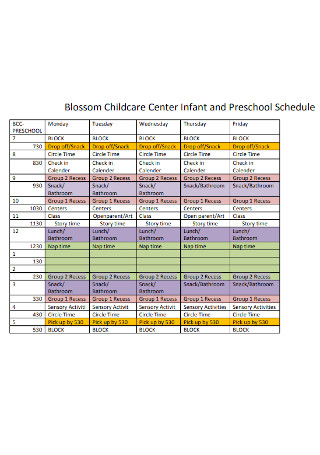
Infant and Preschool Schedule
download now -
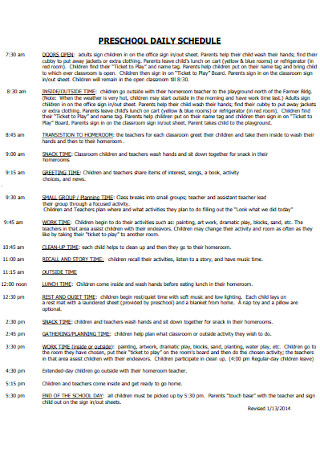
Preschool Teacher Schedule
download now -
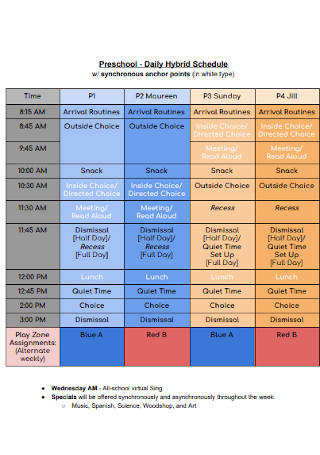
Preschool Daily Hybrid Schedule
download now -

Preschool Classroom Schedule
download now -
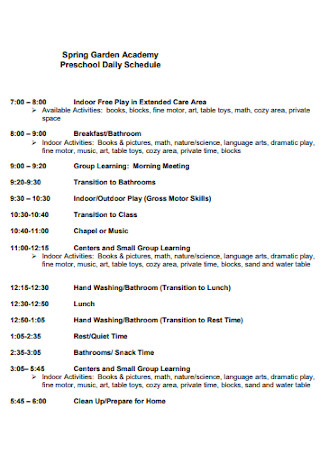
Academy Preschool Daily Schedule
download now -
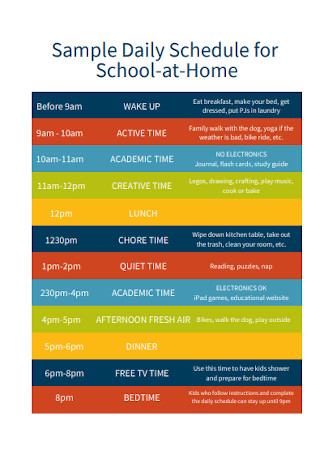
Daily Schedule for School at Home
download now -
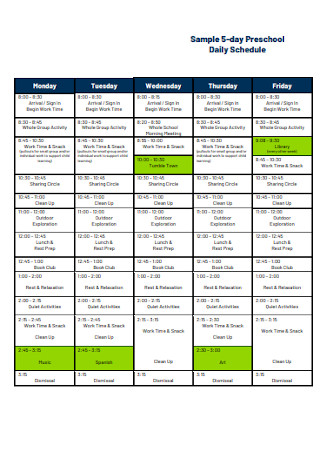
Sample Pre-School Daily Schedule
download now -
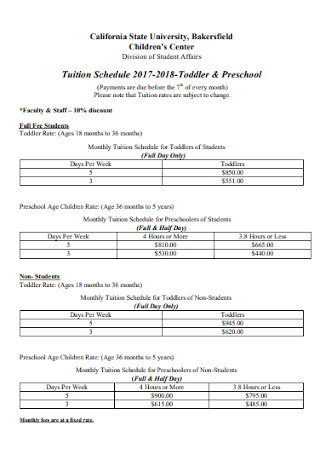
Toddler and Preschool Schedule
download now -
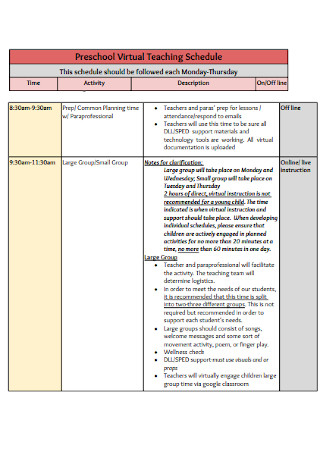
Preschool Virtual Teaching Schedule
download now -
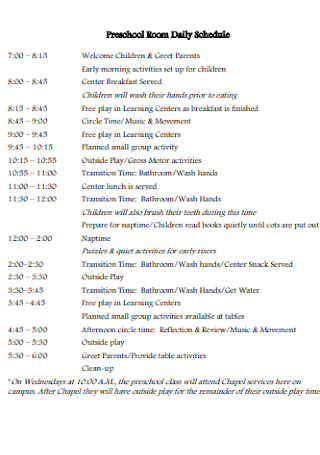
Preschool Room Daily Schedule
download now -
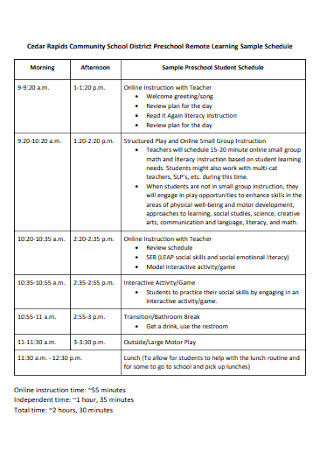
Preschool Remote Learning Schedule
download now -

Preschool Summer Camp Schedule
download now -
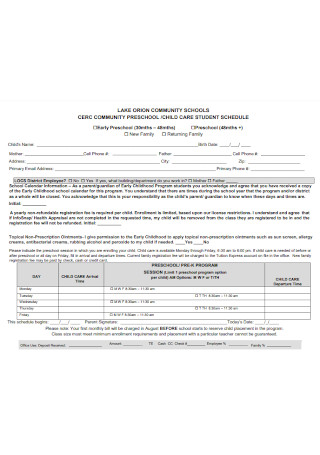
Preschool Students Schedule
download now -
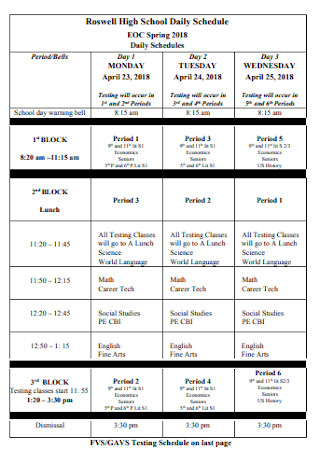
Formal School Schedule Template
download now -
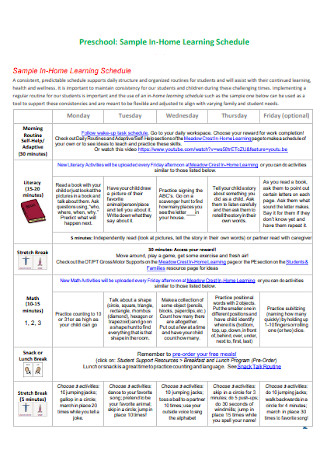
Preschool Home Learning Schedule
download now -

Memorial High School Bell Schedule
download now -
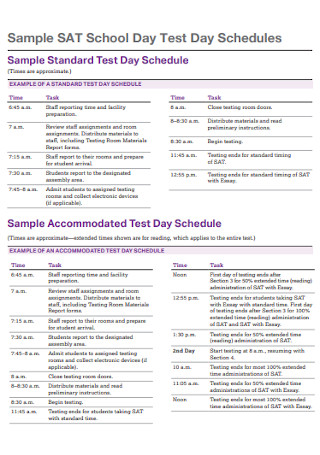
Preschool Day Test Day Schedule
download now -

Outdoor Preschool Daily Schedule
download now -
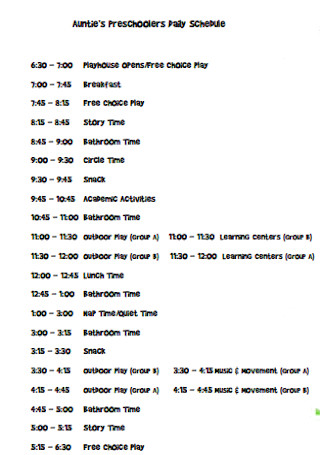
Preschoolers Daily Schedule
download now -
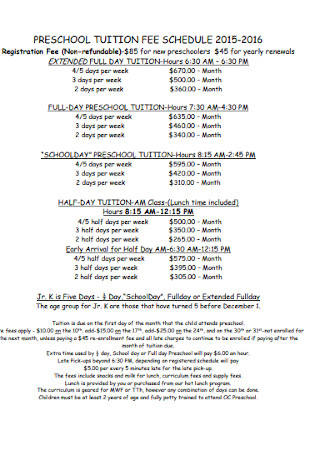
Preschool Tuition Fee Schedule
download now -
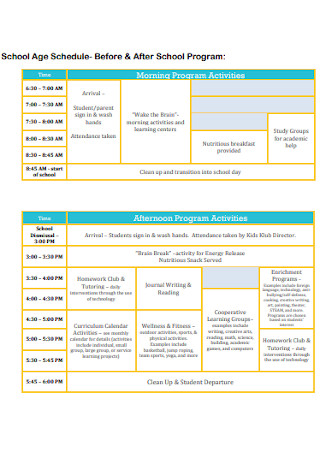
School Age Daily Schedule
download now
Preschool Schedules: What Are They?
A preschool schedule is basically a school schedule aimed at the list of school activities in the preschool classroom from morning until dismissal. It is a helpful guide for kids, parents, and teachers to stay in the loop of what is expected to happen in school according to schedule. And preschool schedules are worth introducing to young children so they get the idea of how their daily routine plays out in preschool.
The Center for Disease Control and Prevention reported that children of ages between three and five years old are called preschoolers.
Also, Statista’s research survey said that 1.62 million children in America were enrolled in prekindergarten programs in the school year 2019–2020.
Why Should You Create a Preschool Schedule?
Indeed, preschool is not the time to delve into serious education because loads of playtime and basic school subjects are given here, considering preschoolers are still young. Nonetheless, scheduling still plays an important role so that time won’t be wasted in school. In fact, preschool schedules are very important because of the following reasons:
Big Picture of a Preschooler’s Life in the Classroom
It is essential for preschoolers, parents, and teachers to know how classes run in school such as knowing what time school starts and ends. A preschool schedule can do more than just display time because it also shows what will happen between periods from snack time, group work, to outdoor play. So it is basically like an agenda of how preschool life plays out for the day, week, month, or whole preschool semester.
Productive Preschool Activities
What makes preschool schedules special is how there are subjects and activities enlisted with corresponding timeframes per activity. That is helpful in maintaining a productive preschool program rather than just inviting kids in the classroom without knowing what exactly to do for the whole day. Consider the schedule as a task list because what is meant to happen at 8:00 AM, for example, must be done on time.
Detailed List of Activities
Preschool schedules answer a lot of questions including what the activities to do in a day are, when to accomplish them, how much time is divided into a day, how much the frequency of certain activities are, etc. And it is through those details that a preschooler will learn how the preschool daily routine in the classroom works.
Easy Reference
Gone are the days you forget about what happens in school because preschool schedules are a reliable reference. In fact, the details are presented in an easy-to-follow format like how printable calendars and to-do lists look like. So rather than writing the schedule in long paragraphs and sentences, scheduling has a different type of data presentation.
Flexible for Different Schedules
Don’t assume that a preschool schedule is presented as a school daily schedule only. You can draft the preschool schedule as a weekly or monthly schedule too. In fact, some preschoolers have a half-day schedule rather than a full-day schedule. Also, not all preschoolers go into a preschool classroom because homeschool is possible. Hence, you can set the schedule differently rather than just following one type.
The Basic Elements of a Preschool Schedule
Although preschool schedules differ from one school or student to another, there is a common format in terms of what to expect inside the schedule. And standard preschool schedules contain the following essential elements:
How to Make an Easy Preschool Schedule
To make sure children enjoy their preschool life and be educated early, making sure they have a solid preschool schedule is vital. And you can achieve creating a seamless preschool schedule by following these five easy steps:
-
Step 1: Review the Original Preschool Program
Just like how college students use a study load to make a college schedule and see their list of subjects or timeframe of different classes, check the original preschool program so you will be guided on what to expect in the program. Preschool teachers normally have this part planned out already. If no reference is available, then be sure to set the program according to standards. You can see an acceptable preschool schedule or program in this article’s FAQ section below.
-
Step 2: Use a Sample Preschool Schedule
Make a preschool schedule without working from scratch using the 50+ preschool schedule samples listed above in this article. You can optimize a free preschool schedule template of your choice such as a preschool daily schedule template with pictures and even a blank preschool schedule chart. Then, customize the template wherein its details match the data coming from the original preschool program. Go for any format or design you like!
-
Step 3: Add the Preschool Schedule’s Elements
From the title, table, time, down to the notes, be sure your preschool schedule consists of the basic elements that make up a complete preschool schedule. Because if you have the timeframes set but they lack the list of activities, for example, the schedule is still incomplete. And aside from the mentioned elements, you can also insert other details in the schedule such as alternative activities so the schedule does not have to be repetitive.
-
Step 4: Use Visual Organizers
You can improve your preschool schedule more with visual organizers. So aside from a table, you can incorporate checkboxes, graphs, and other symbols that can arrange and present your details in an organized manner. As much as possible, the document must be easy to read, especially when you want preschoolers to understand its content. That explains why visual schedules are highly effective among preschoolers since they can’t read and understand complex words yet.
-
Step 5: Make the Most Out of Your Schedule
Rather than just scheduling what happens in school from the arrival routine to dismissal time, you can do more to the schedule. An example is to include the daily to-do list or routine of these four-year-olds such as when they are expected to wake up, eat breakfast, down to what happens after dismissal such as eating dinner, brushing the teeth, and even preparing the bed. That way, preschoolers grow to be responsible since their routines can further become a habit.
FAQs
What is a good example of a preschool schedule?
Here is a great example of a preschool schedule or program worth following:
- 7:50–8:00 AM – Arrival period
- 8:00–8:15 AM – Hands-on puzzles and activities
- 8:15–8:25 AM – Circle session (involves either music or storytime)
- 8:25–9:15 AM – Centers (lets preschoolers choose whether to take art, math, science, etc.)
- 9:15–9:40 AM – Writing
- 9:40–10:10 AM – Recess
- 10:10–10:40 AM – Math
- 10:40–10:50 AM – Final circle (involves a reflection of the day)
- 10:50–11:00 AM – Dismissal
How many children are enrolled in prekindergarten?
In the school year 2019–2020, about 1.62 million children in the US were enrolled in prekindergarten programs.
How long should preschool lessons be?
According to child development professionals, four-year-olds have an attention span of around 15 minutes. So be sure the circle time is about 15 minutes. Also, each lesson does not have to run longer than 25–30 minutes.
What should circle time include?
Circle time is essential in an average preschool schedule. And activities worth incorporating there are music sessions, group games, talking and listening exercises, and roleplaying.
Just like most class schedules, a preschool schedule is needed to be familiar with any preschooler’s routine in class. Preschoolers themselves even get to adjust with their time spent in school after following a daily rhythm that goes according to their preschool schedule. So when you need help creating the best preschool, kindergarten, or daycare schedule, you can’t go wrong with sample preschool schedule templates as your guide. Download a template now!

